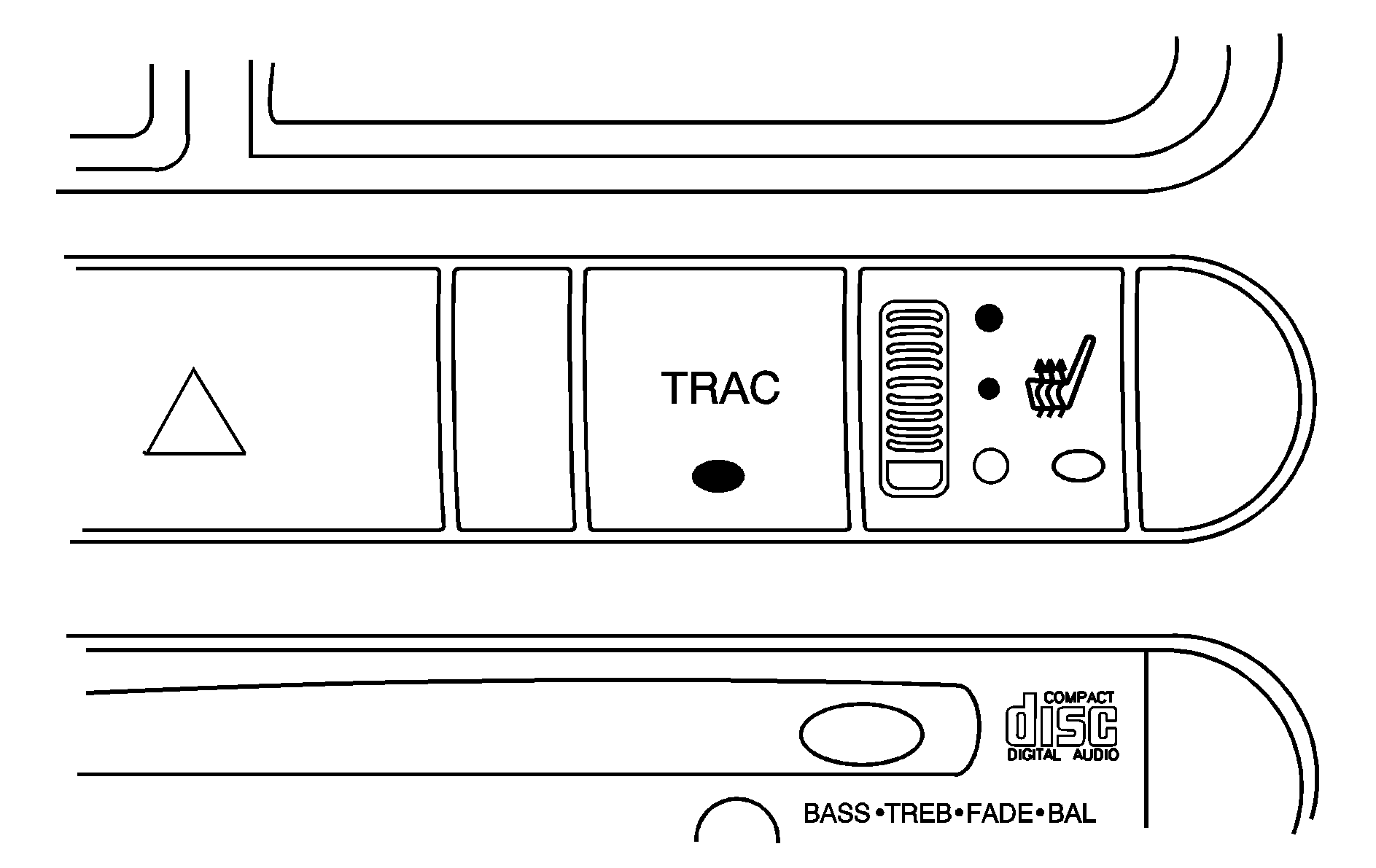Your vehicle may have a traction control system that limits wheel spin. This is especially useful in slippery road conditions. The system operates only if it senses that one or both of the front wheels are spinning or beginning to lose traction. When this happens, the system reduces engine power to limit wheel spin.

This light will come on when your traction control system is limiting wheel spin. See Low Traction Light . You may feel or hear the system working, but this is normal.
The traction control system automatically comes on whenever you start your vehicle. To limit wheel spin, especially in slippery road conditions, you should always leave the system on. But you can turn the traction control system off if you ever need to. You should turn the system off if your vehicle ever gets stuck in sand, mud, ice or snow and rocking the vehicle is required. See "Rocking Your Vehicle To Get It Out" under If Your Vehicle is Stuck in Sand, Mud, Ice, or Snow .

To turn the system off, press the TRAC switch. The light on the switch will go off. If the traction control system is limiting wheel spin when you press the switch, the light on the switch will go off -- but the system won't turn off right away. It will wait until there's no longer a current need to limit wheel spin. You can turn the system back on at any time by pressing the switch again. The light on the switch should come on. If the light does not come on, you may not have traction control and your vehicle should be serviced at A Saturn retailer.
Braking in Emergencies
At some time, nearly every driver gets into a situation that requires hard braking.
If you have anti-lock, you can steer and brake at the same time. However, if you do not have anti-lock, your first reaction -- to hit the brake pedal hard and hold it down -- may be the wrong thing to do. Your wheels can stop rolling. Once they do, the vehicle can not respond to your steering. Momentum will carry it in whatever direction it was headed when the wheels stopped rolling. That could be off the road, into the very thing you were trying to avoid, or into traffic.
If you do not have anti-lock, use a "squeeze" braking technique. This will give you maximum braking while maintaining steering control. You can do this by pushing on the brake pedal with steadily increasing pressure.
In an emergency, you will probably want to squeeze the brakes hard without locking the wheels. If you hear or feel the wheels sliding, ease off the brake pedal. This will help you retain steering control. If you do have anti-lock, it is different.
In many emergencies, steering can help you more than even the very best braking.
